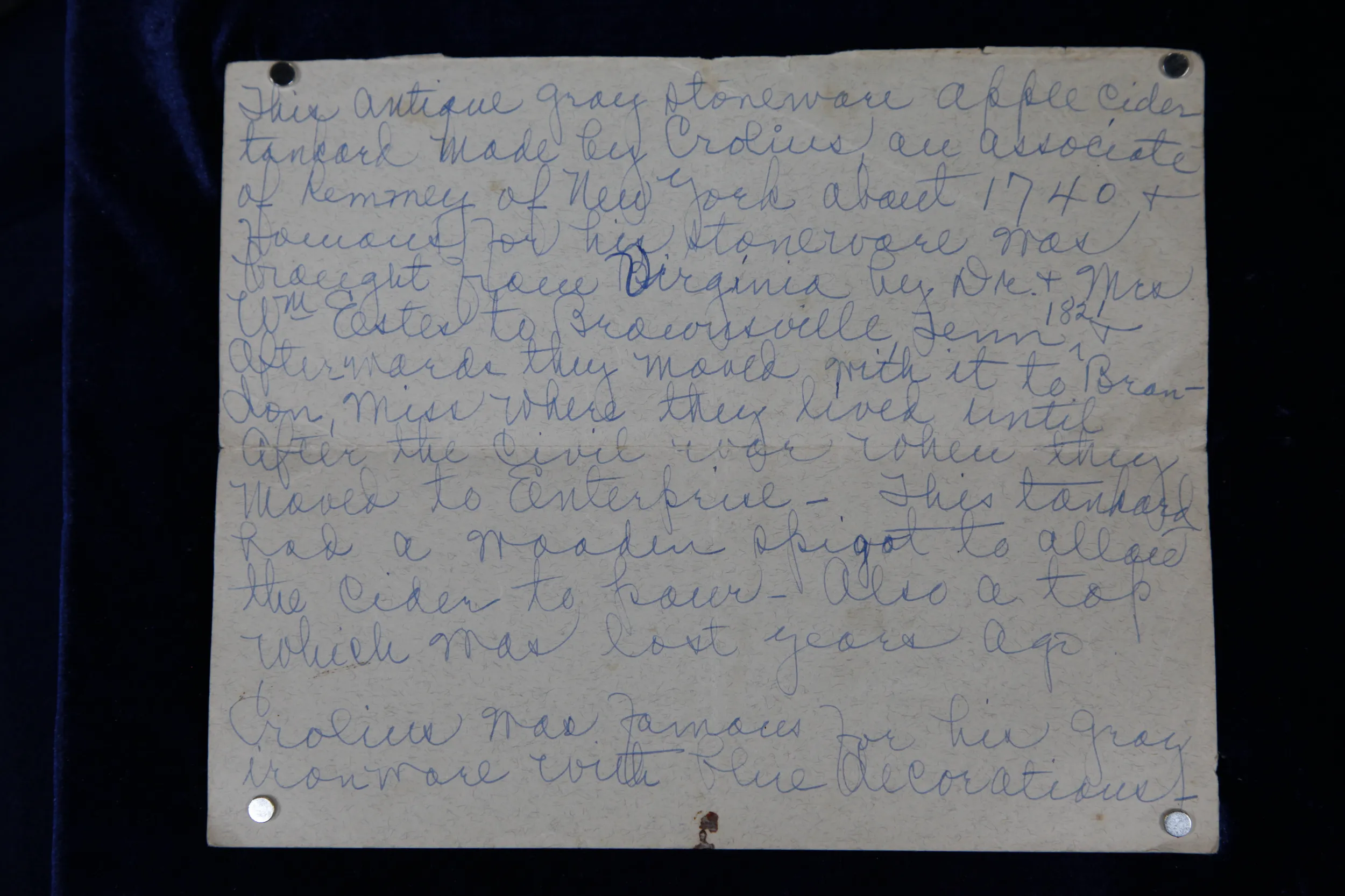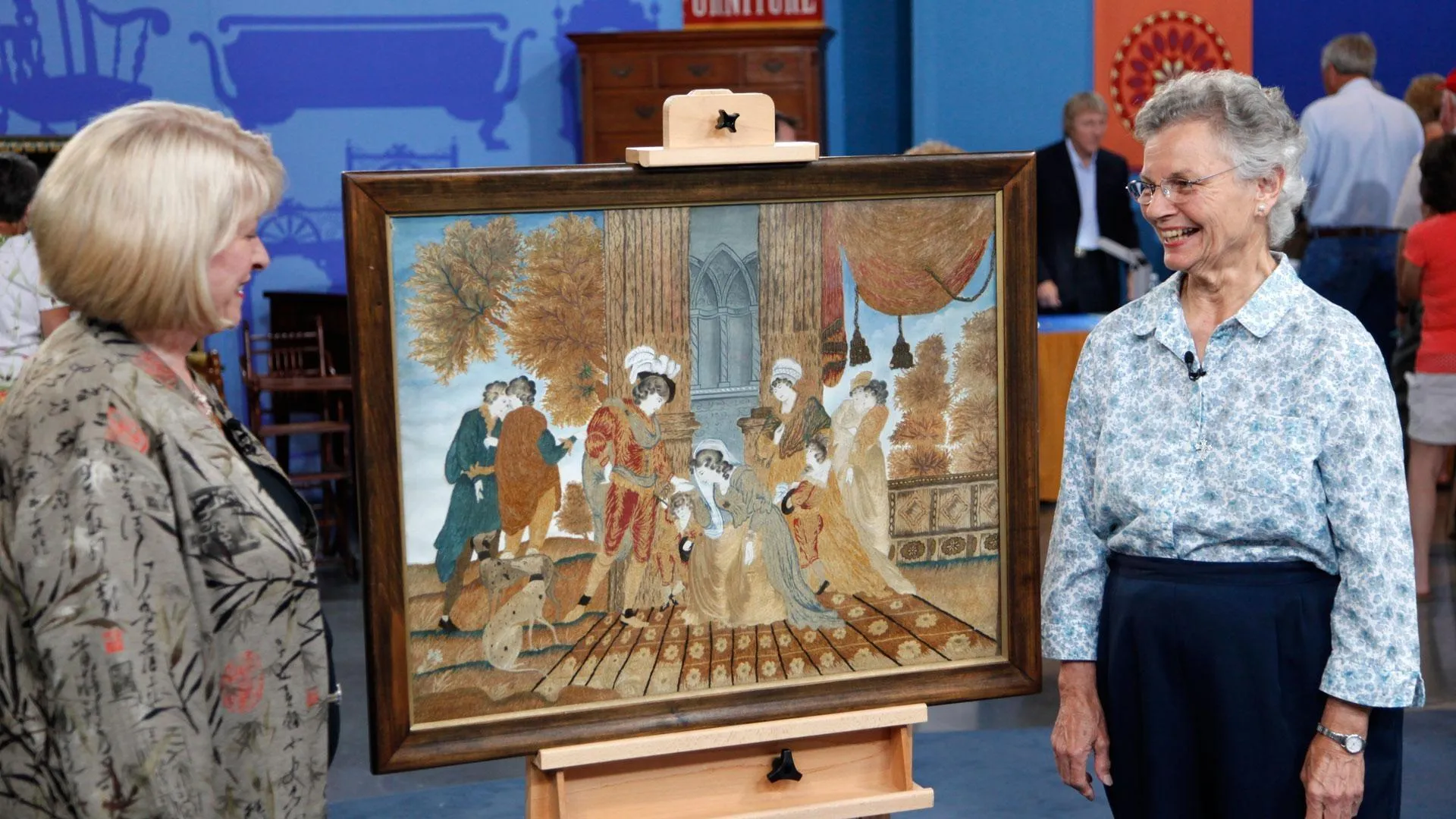GUEST: It was in my aunt's home, and I collect anything blue and white.
APPRAISER: Any kind of stoneware...
GUEST: Yeah, crocks. After she passed away, it came to me. We found the piece of paper in the bottom.
APPRAISER: It says, "This antique gray stoneware apple cider tankard was made by Crolius and Associates and the Remmeys of New York about 1740." From your great-aunt, right?
GUEST: Yeah. In her handwriting.
APPRAISER: It goes on to say that it was made by him and then brought from Virginia to Tennessee by your ancestors, right?
GUEST: Yeah.
APPRAISER: What do you think the form is?
GUEST: We thought it was a whiskey jug.
APPRAISER: The form itself is actually like a water cooler. You could probably put whiskey-- and have a great time-- in it. And these were made as presentation pieces. The history here is great to have with it, but it was not made in New York by the Remmeys or the Croliuses.
GUEST: Really?
APPRAISER: It was made in Baltimore, Maryland. Baltimore was really the biggest stoneware-producing area south of the Mason-Dixon Line, really in the early 19th century.
GUEST: Really? I didn't know that.
APPAISER: From about 1800 to 1850, it was a massive production center. And they shipped out salt glaze stoneware all over the place. This is a typical salt glaze piece. They had to shovel salt in the kiln, 2,200, 2,300 degrees. The salt vaporized and coated every bit of the piece. Do you see that shininess and the kind of like an orange peel surface? That's the salt that coated it and protected the liquids from coming out. The cool thing about the cobalt blue decoration is that it's very profuse. You have these serpentine lines.
GUEST: Is that done by a brush or by hand?
APPRAISER: That was done by a brush, probably. Sometimes they used slip cups, like a wedding cake design. It would have had a wooden spigot, which you could turn. And it mentions that in your aunt's letter, that there's a spigot and a wooden cover. And you turn it around the back, it's decorated really great in the back. Here this little piece of brown, these flowers going out of there. And so what you have is a salt glaze stoneware circa 1825-1835 piece made in Baltimore, wonderful quality, presentation piece, also with these vertical handles, beautiful vertical ears, which add value to it. The condition's wonderful. So all those things together, this, easily, at auction is worth in a range of $3,000 to $5,000.
GUEST: Oh, you'd kidding.
APPRAISER: (laughing) Yeah.
GUEST: It's amazing.
APPRAISER: (laughing) You going to treat it any differently or...?
GUEST: Yeah, I think I will.





